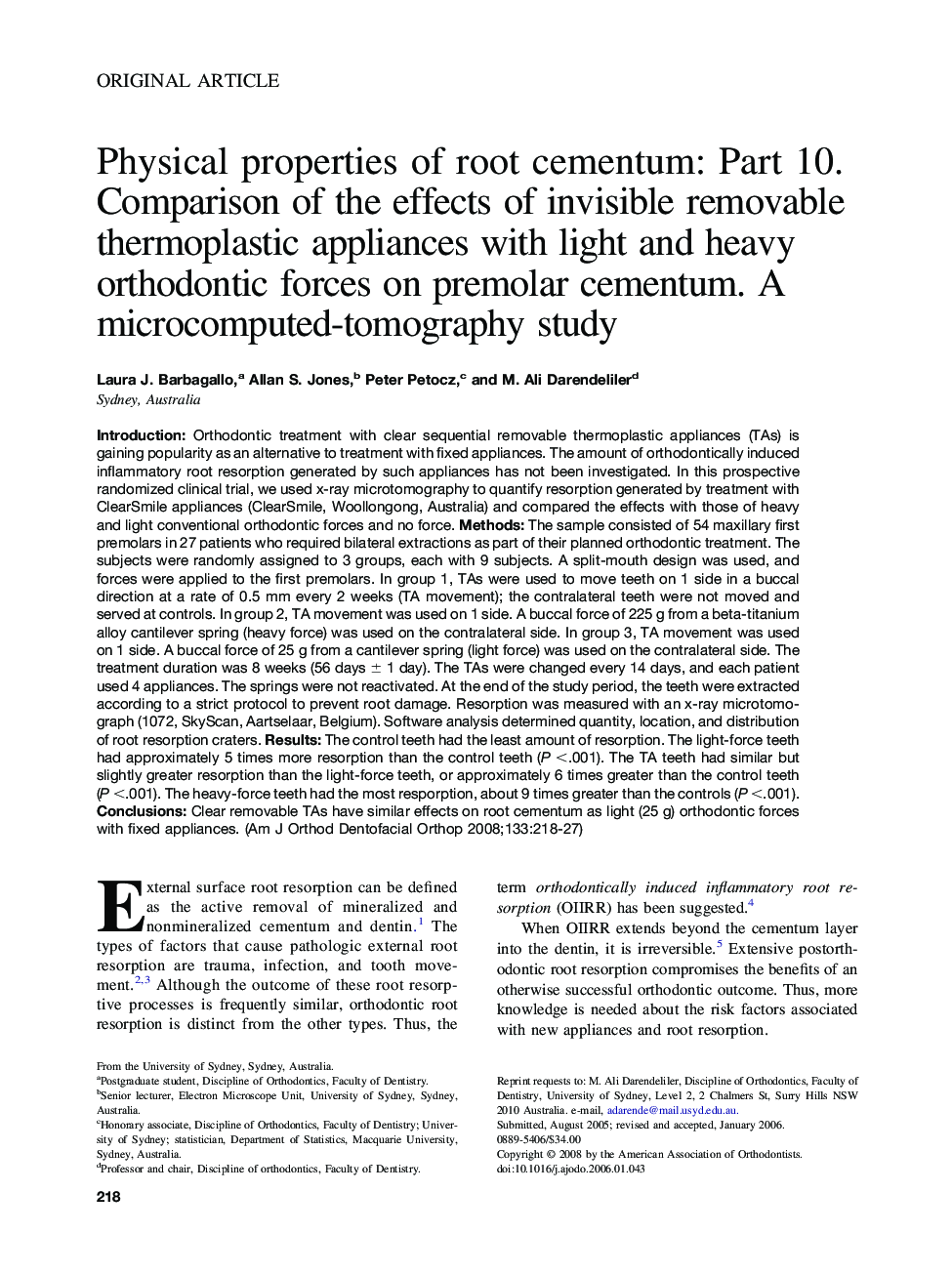| Article ID | Journal | Published Year | Pages | File Type |
|---|---|---|---|---|
| 3120360 | American Journal of Orthodontics and Dentofacial Orthopedics | 2008 | 10 Pages |
Introduction: Orthodontic treatment with clear sequential removable thermoplastic appliances (TAs) is gaining popularity as an alternative to treatment with fixed appliances. The amount of orthodontically induced inflammatory root resorption generated by such appliances has not been investigated. In this prospective randomized clinical trial, we used x-ray microtomography to quantify resorption generated by treatment with ClearSmile appliances (ClearSmile, Woollongong, Australia) and compared the effects with those of heavy and light conventional orthodontic forces and no force. Methods: The sample consisted of 54 maxillary first premolars in 27 patients who required bilateral extractions as part of their planned orthodontic treatment. The subjects were randomly assigned to 3 groups, each with 9 subjects. A split-mouth design was used, and forces were applied to the first premolars. In group 1, TAs were used to move teeth on 1 side in a buccal direction at a rate of 0.5 mm every 2 weeks (TA movement); the contralateral teeth were not moved and served at controls. In group 2, TA movement was used on 1 side. A buccal force of 225 g from a beta-titanium alloy cantilever spring (heavy force) was used on the contralateral side. In group 3, TA movement was used on 1 side. A buccal force of 25 g from a cantilever spring (light force) was used on the contralateral side. The treatment duration was 8 weeks (56 days ± 1 day). The TAs were changed every 14 days, and each patient used 4 appliances. The springs were not reactivated. At the end of the study period, the teeth were extracted according to a strict protocol to prevent root damage. Resorption was measured with an x-ray microtomograph (1072, SkyScan, Aartselaar, Belgium). Software analysis determined quantity, location, and distribution of root resorption craters. Results: The control teeth had the least amount of resorption. The light-force teeth had approximately 5 times more resorption than the control teeth (P <.001). The TA teeth had similar but slightly greater resorption than the light-force teeth, or approximately 6 times greater than the control teeth (P <.001). The heavy-force teeth had the most resporption, about 9 times greater than the controls (P <.001). Conclusions: Clear removable TAs have similar effects on root cementum as light (25 g) orthodontic forces with fixed appliances.
